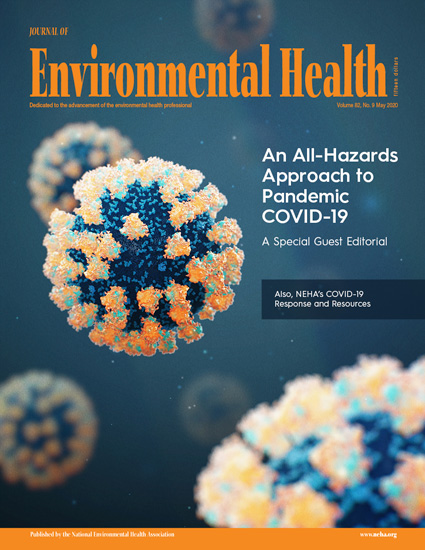早年接触二手烟与 12 岁时的饮食行为
IF 5.3
2区 环境科学与生态学
Q1 ENVIRONMENTAL SCIENCES
引用次数: 0
摘要
产前或儿童早期接触二手烟草烟雾(SHS)会增加肥胖风险。然而,这种关联的潜在机制尚不清楚,但导致肥胖的饮食行为是SHS成分可能干扰的途径之一。我们的目的是评估产前和儿童早期接触 SHS 与青少年饮食行为之间的关联。数据来自一个前瞻性怀孕和出生队列(N = 207,俄亥俄州辛辛那提市)。通过多信息模型,我们估算了产前(妊娠 16 周和 26 周母体血清中可替宁浓度的平均值)和儿童早期可替宁浓度(12、24、36 和 48 个月的平均浓度)与 12 岁时饮食行为(儿童饮食行为问卷)的相关性。我们测试了不同暴露期和青少年性别之间的关联是否存在差异。模型调整了母亲和儿童的协变量。我们发现,可替宁测量值与青少年饮食行为之间没有统计学意义上的显著关联。然而,在女性中,产前可替宁与较高的食物反应性(β:0.23;95% CI:0.08,0.38)和较低的饱腹感反应性(β:-0.14;95% CI:-0.26,-0.02)相关;在男性中,产前可替宁与较低的饱腹感反应性(β:-0.14;95% CI:-0.26,-0.02)相关。02);在男性中,产前和产后可替宁与较低的食物反应性有关(产前:β:-0.25;95% CI:-0.04,-0.06;产后:β:-0.36;95% CI:-0.06,-0.11)。在其他饮食行为方面,没有发现性别或暴露窗口对其有明显的影响。在该队列中,产前和儿童早期接触 SHS 与青少年的饮食行为无关;但是,生理性别可能会改变这些关联。本文章由计算机程序翻译,如有差异,请以英文原文为准。
Early life exposure to secondhand tobacco smoke and eating behaviors at age 12 years
Prenatal or early childhood secondhand tobacco smoke (SHS) exposure increases obesity risk. However, the potential mechanisms underlying this association are unclear, but obesogenic eating behaviors are one pathway that components of SHS could perturb. Our aim was to assess associations of prenatal and early childhood SHS exposure with adolescent eating behaviors. Data came from a prospective pregnancy and birth cohort (N = 207, Cincinnati, OH). With multiple informant models, we estimated associations of prenatal (mean of 16 and 26 weeks of gestation maternal serum cotinine concentrations) and early childhood cotinine (average concentration across ages 12, 24, 36, and 48 months) with eating behaviors at age 12 years (Child Eating Behaviors Questionnaire). We tested whether associations differed by exposure periods and adolescent’s sex. Models adjusted for maternal and child covariates. We found no statistically significant associations between cotinine measures and adolescent’s eating behaviors. Yet, in females, prenatal cotinine was associated with greater food responsiveness (β: 0.23; 95% CI: 0.08, 0.38) and lower satiety responsiveness (β: -0.14; 95% CI: -0.26, -0.02); in males, prenatal and postnatal cotinine was related to lower food responsiveness (prenatal: β: -0.25; 95% CI: -0.04, -0.06; postnatal: β: -0.36; 95% CI: -0.06, -0.11). No significant effect modification by sex or exposure window was found for other eating behaviors. Prenatal and early childhood SHS exposures were not related to adolescent’s eating behavior in this cohort; however, biological sex may modify these associations.
求助全文
通过发布文献求助,成功后即可免费获取论文全文。
去求助
来源期刊

Environmental Health
环境科学-公共卫生、环境卫生与职业卫生
CiteScore
10.10
自引率
1.70%
发文量
115
审稿时长
3.0 months
期刊介绍:
Environmental Health publishes manuscripts on all aspects of environmental and occupational medicine and related studies in toxicology and epidemiology.
Environmental Health is aimed at scientists and practitioners in all areas of environmental science where human health and well-being are involved, either directly or indirectly. Environmental Health is a public health journal serving the public health community and scientists working on matters of public health interest and importance pertaining to the environment.
 求助内容:
求助内容: 应助结果提醒方式:
应助结果提醒方式:


